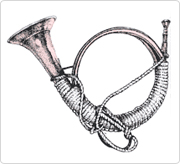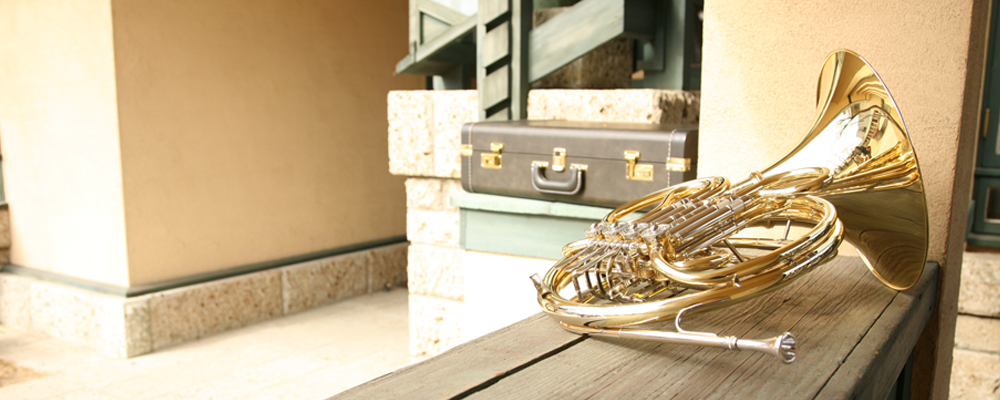The origins of the Horn
The birth of the horn
In the beginning was an animal's horn
The original horn was simply an animal horn. The word for "horn" in German is "horn," in French "cor," and in Italian "corno." The terms "cor" and "corno" originally meant an animal's horn, directly expressing the animal origins of the horn. It is most likely that people from ancient times turned the horns of their prey into musical instruments. This description both explains the origin of the horn and the etymology of the word "horn." There are many other musical instruments that bear the name "horn," but today, the instrument known as the horn is commonly called the "French horn".

A very simple structure, until the mid-nineteenth century
Until the middle of the sixteenth century, the horn was used by hunters as a means of communication during the hunt, and thus the body of the horn was wound in large coils so that it could be carried on the shoulder and sounded while riding a horse. In addition, the bell faced to the rear to keep it from getting in the rider's way.
The horn is very similar to the trumpet in that sound is produced through the vibration of the lips. Maybe that is why the horn has a history of development almost identical to that of the trumpet.
Horns made up to the middle of the nineteenth century are called "natural horns" because of their simplistic structure, which consists of a large bell, a single coiled tube, and a mouthpiece.
The pitch of this type of instrument can only be changed by changing the vibration of the lips, and even then it is only possible to produce a tone referred to as a "natural harmonic." This of course means that it cannot play musical scales. This state of affairs drove the players of the horn to think of sticking a hand in the bell to produce a tone other than this natural harmonic. This way of playing the horn, called the "hand-stopping technique" developed among horn players in the eighteenth century.
Despite the new hand-stopping technique, the range of tones possible with the horn was still very limited, the tones and pitches were unstable, and the timbre had a muffled quality. The resolution of this problem came in the mid-nineteenth century with the development of what was known then as the "valve horn," a horn whose effective length could be altered instantly by opening one or more valves like those on today's modern instruments.
With the arrival the valve horn, horn players could now easily play a stable chromatic scale.
The end of the nineteenth century saw the invention of the double horn, which combined two tubes of different lengths, and in the twentieth century, the triple horn was invented.
Musical Instrument Guide : Horn Contents
Origins
Structure
How to Play
How the Instrument is Made
Choosing an Instrument
Trivia
- Famous horn works
- Concertos
- Mesmerizing fifths
- What does a very long horn sound like?
- The visual effect of "bells up"
- Mozart loved a good prank
- Is that the nature of the horn?
- An instrument by day, and a drinking mug by night
- Horn players can play the Wagner tuba, despite the name
- Why are horns included in woodwind quintets?
- What do you call someone who plays a horn?
- The reason that alto horns are used in brass bands
- What is a Vienna horn?
- Garlands do not deaden sound
- What is the Knopf model?
- New instruments have just been washed

